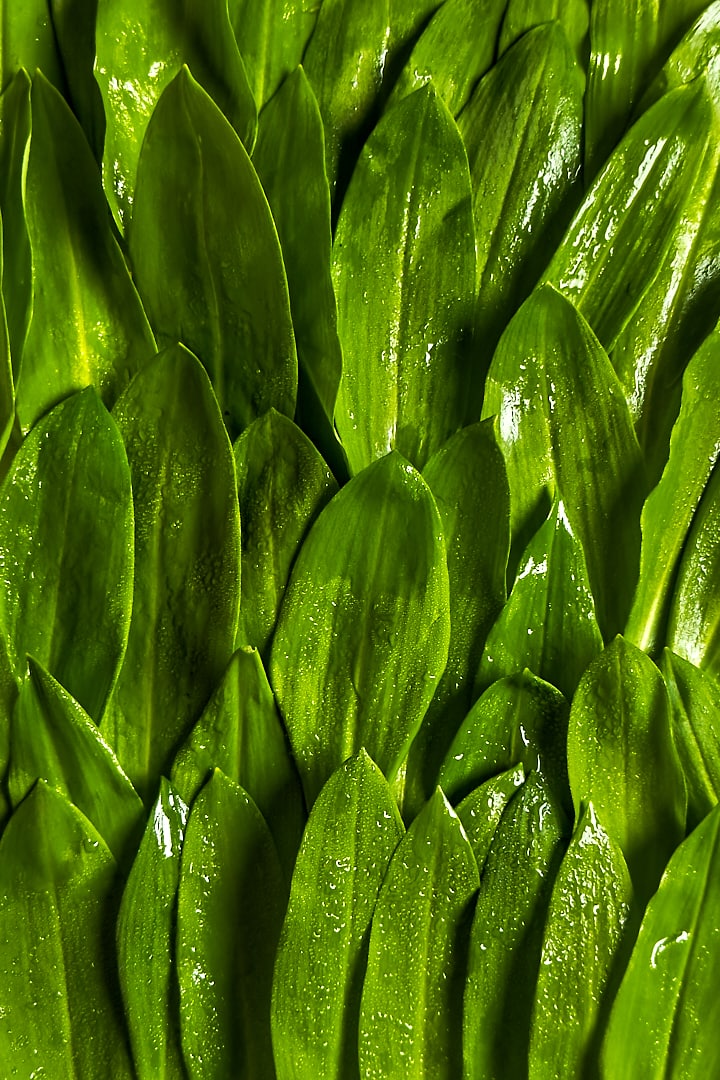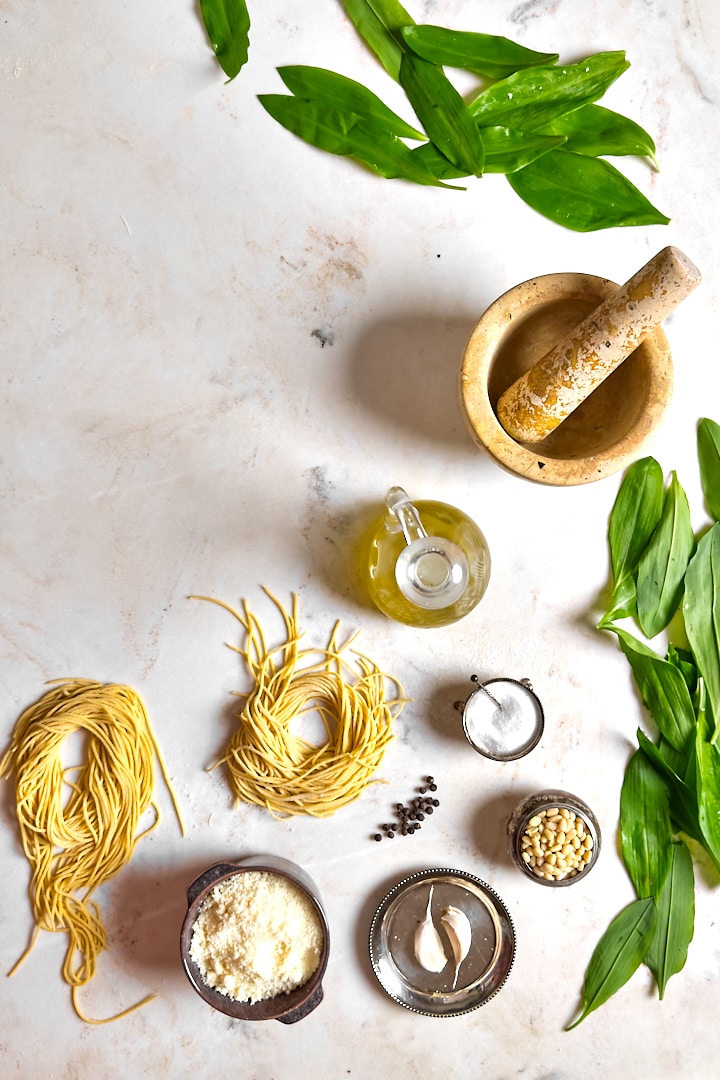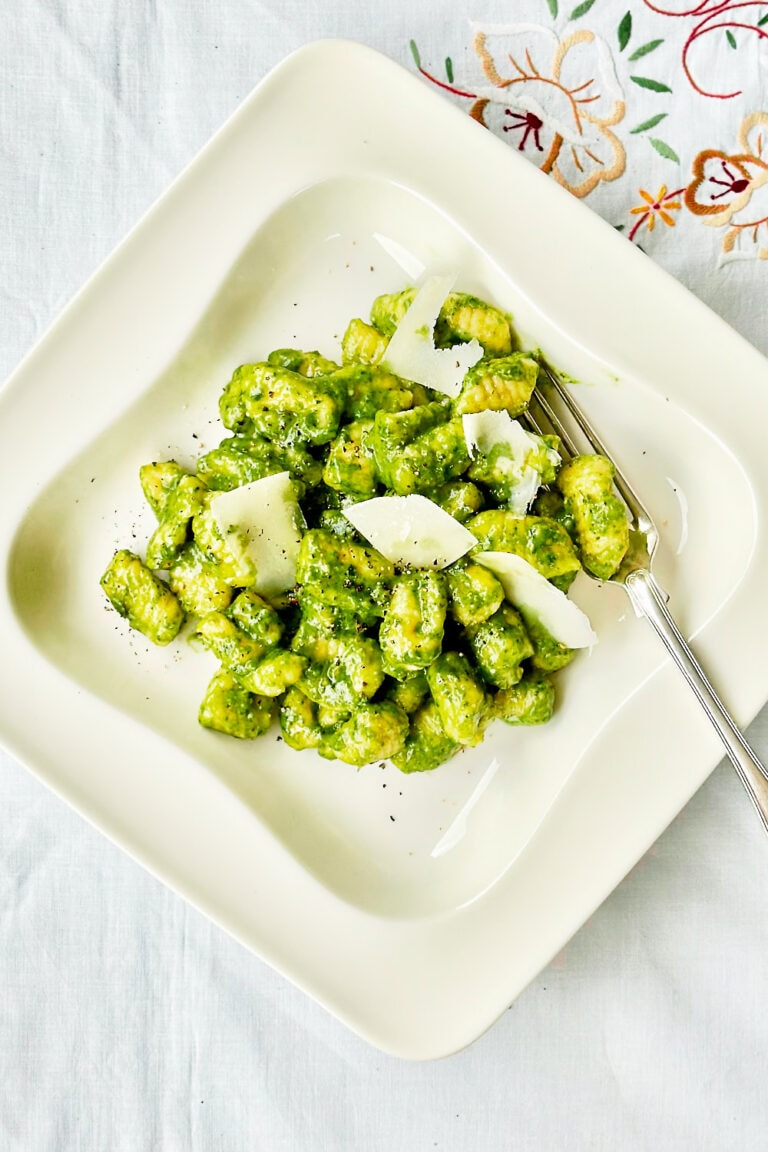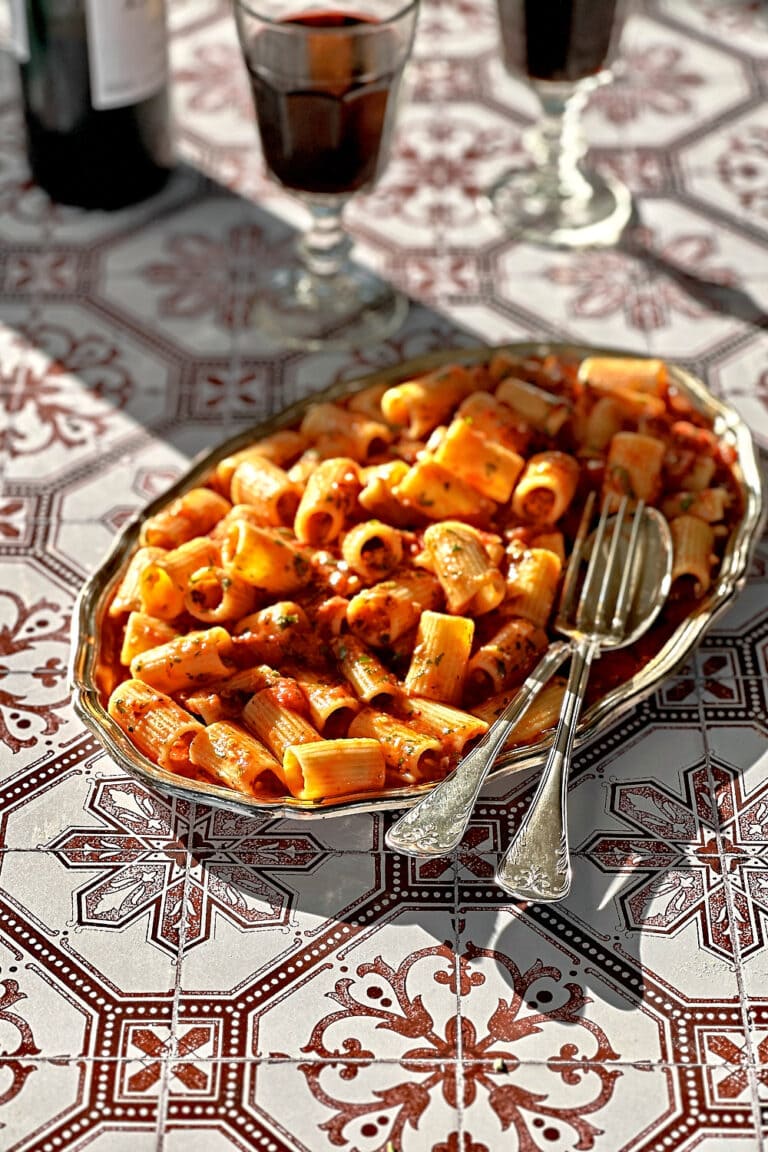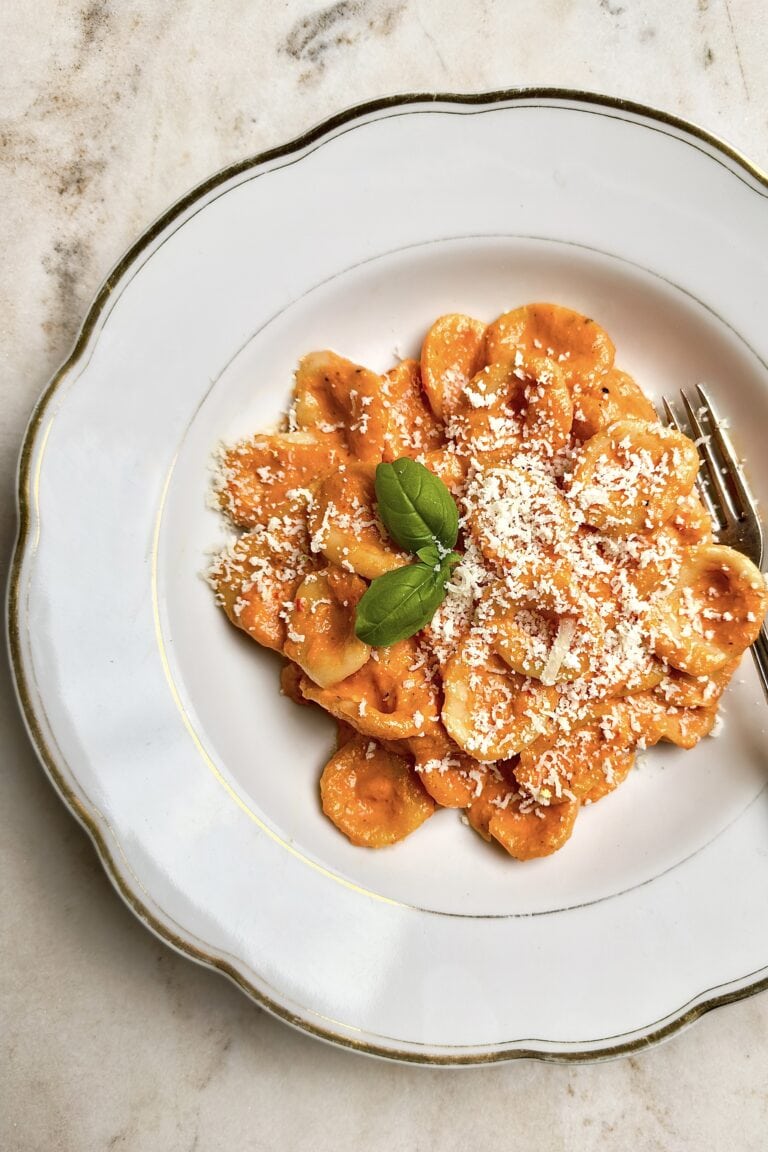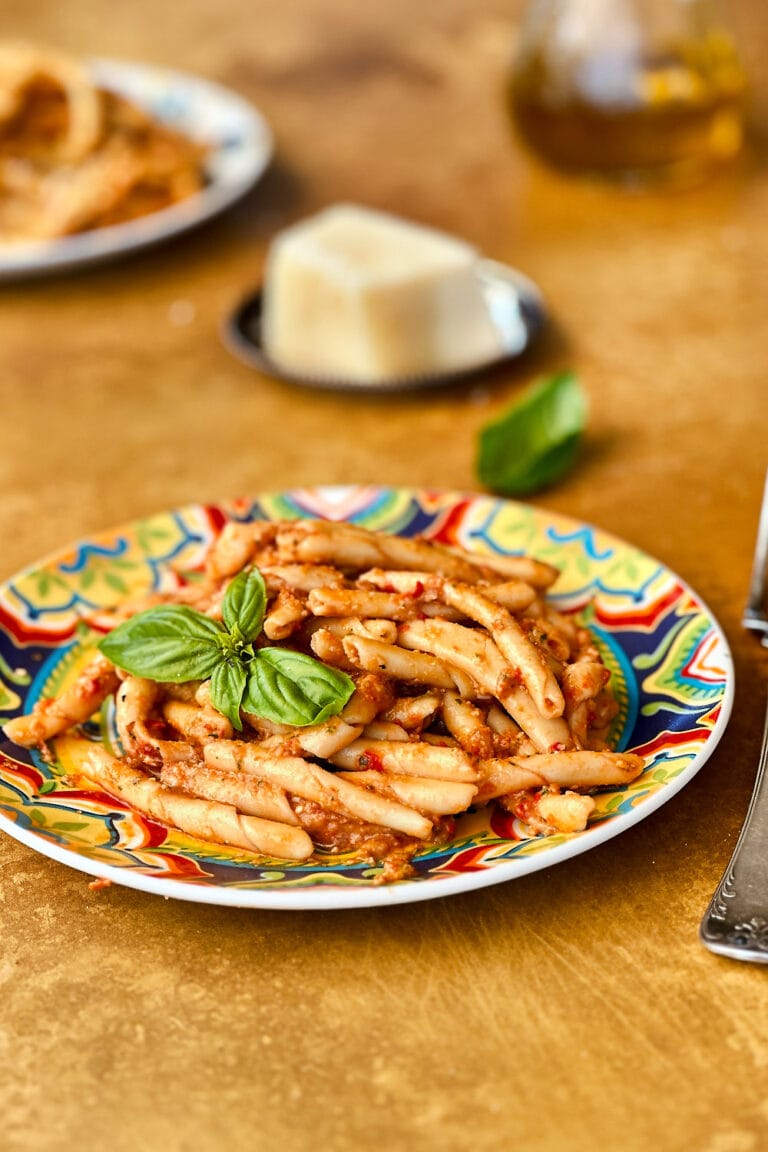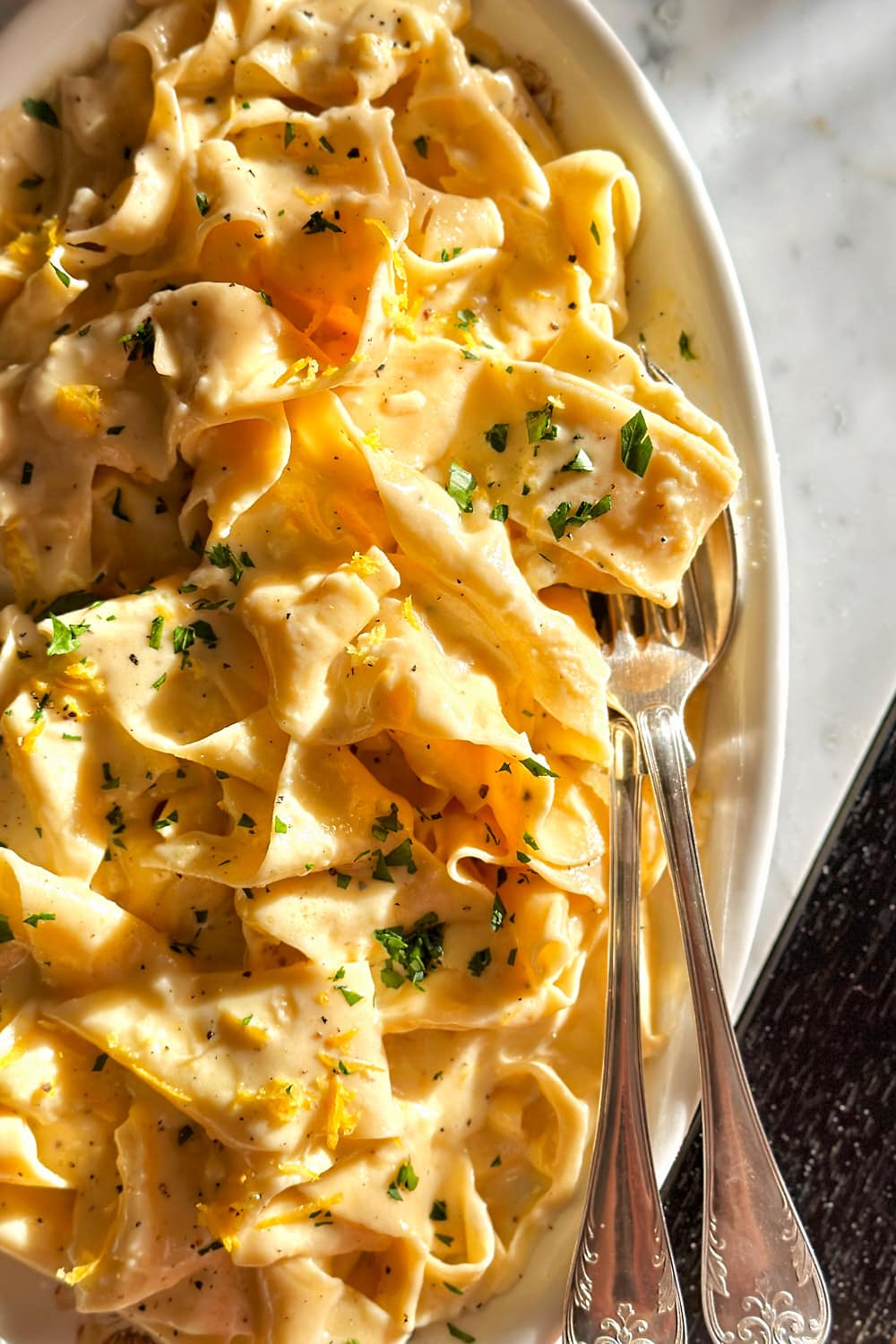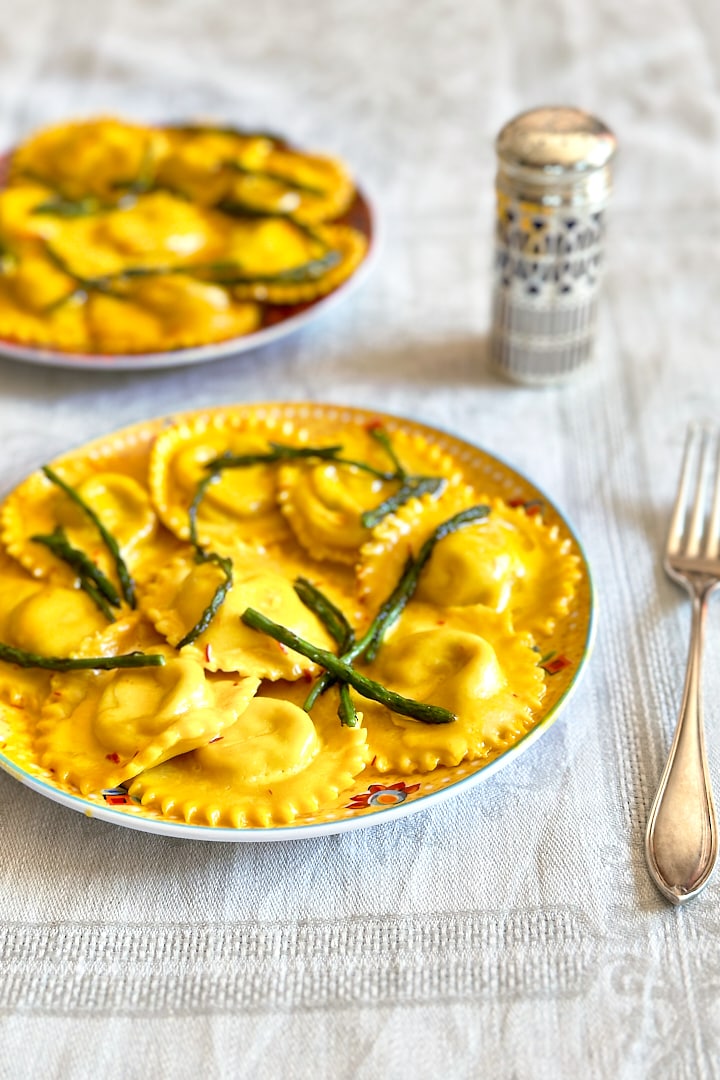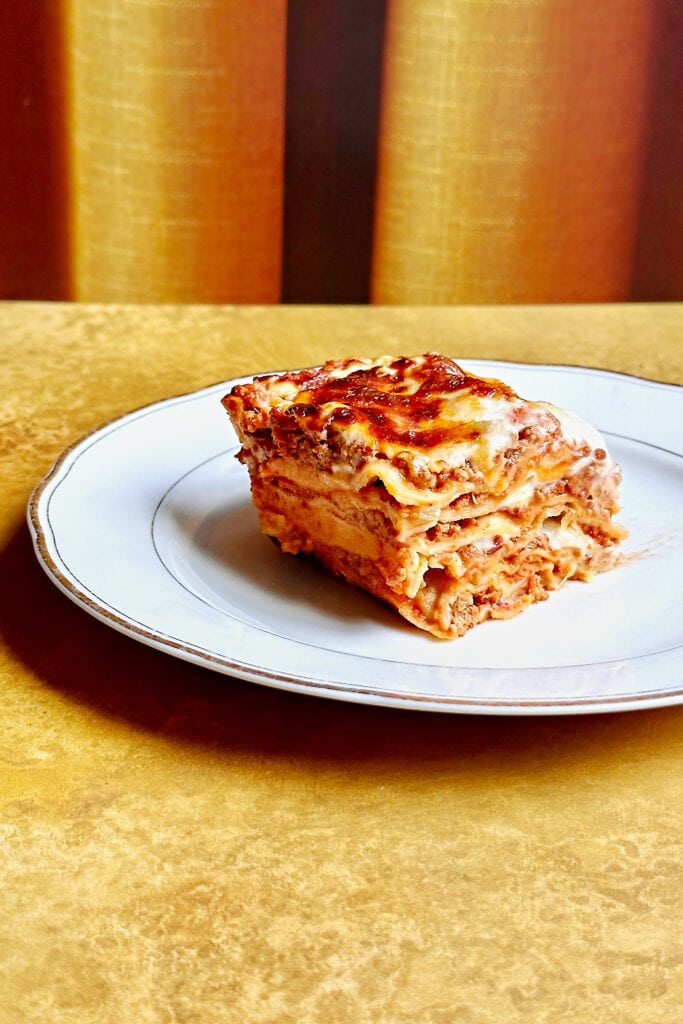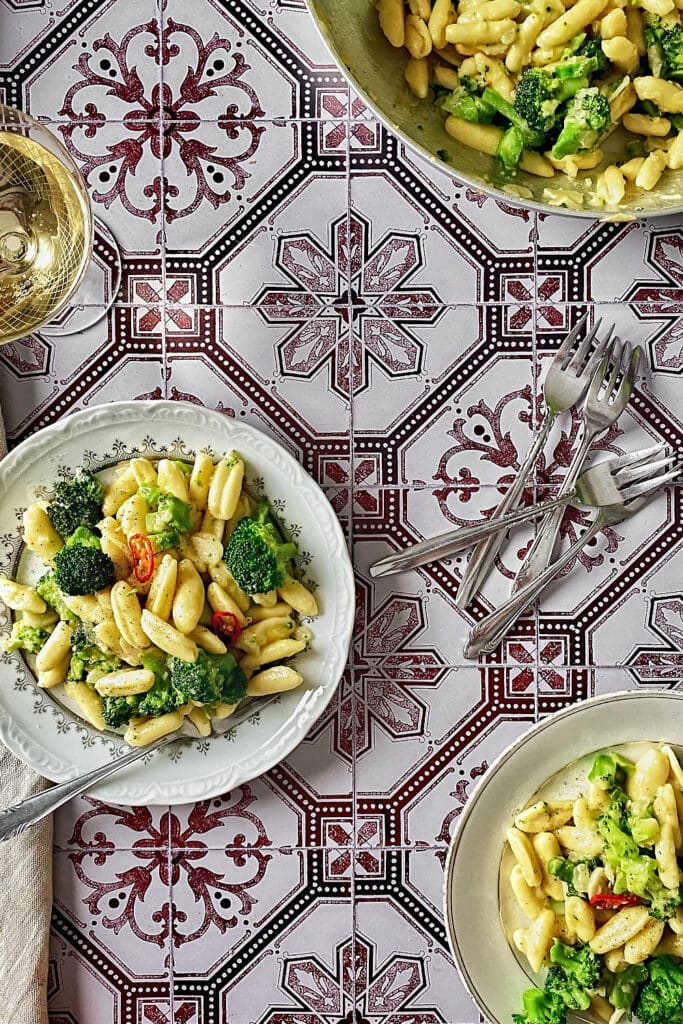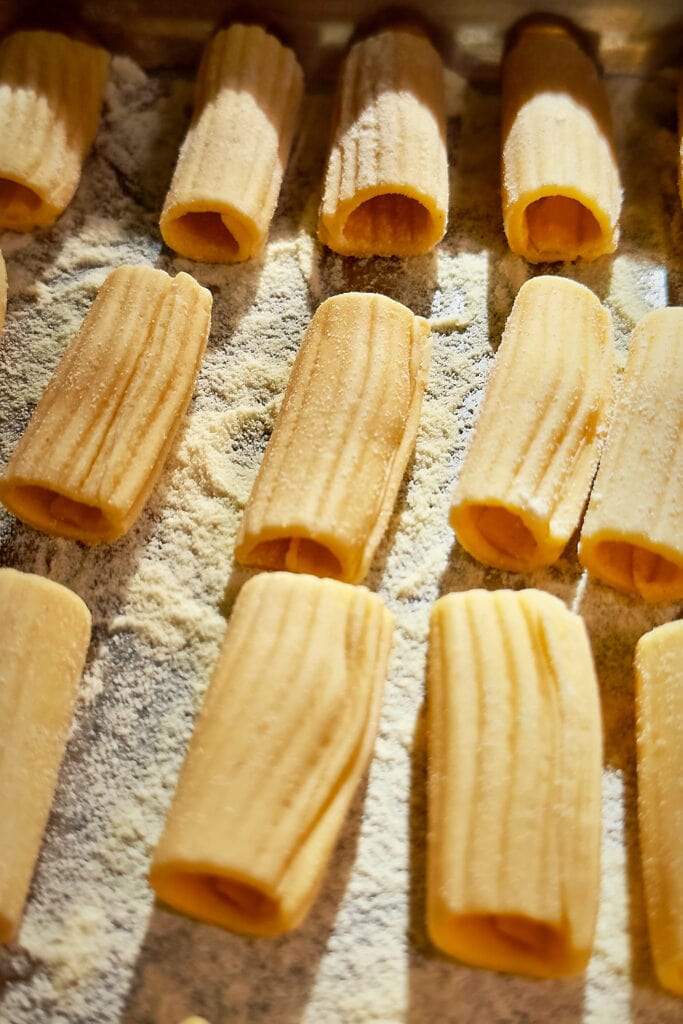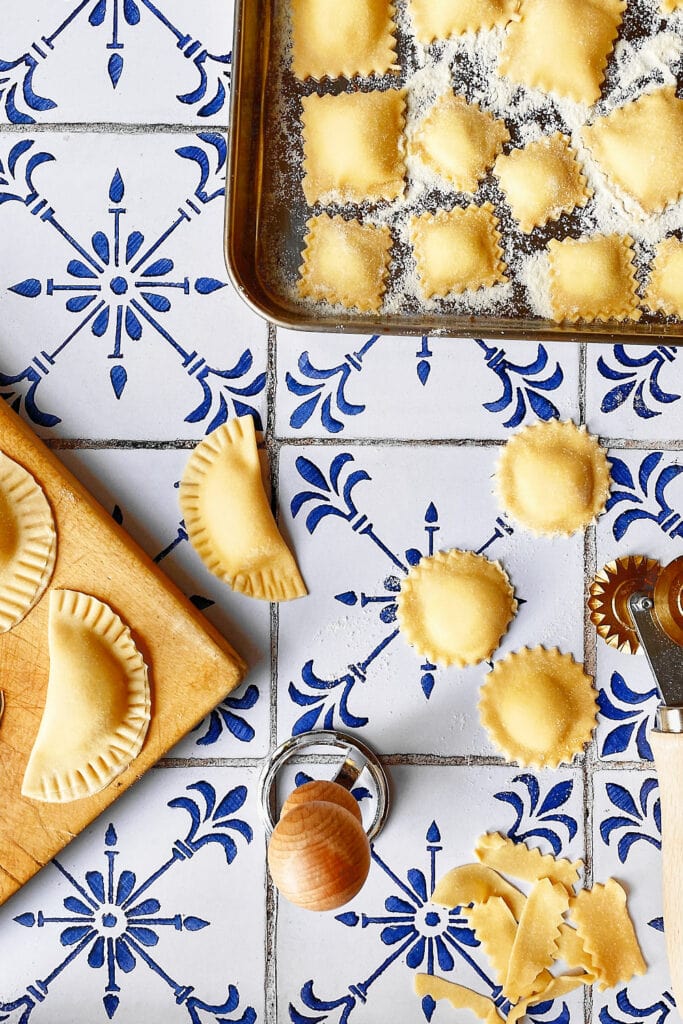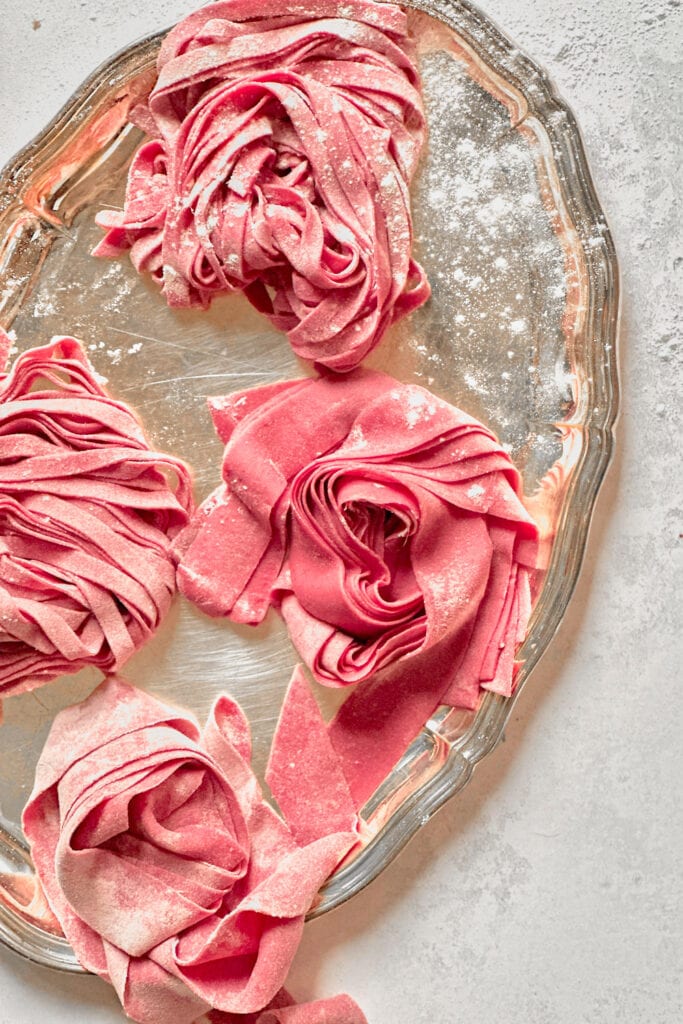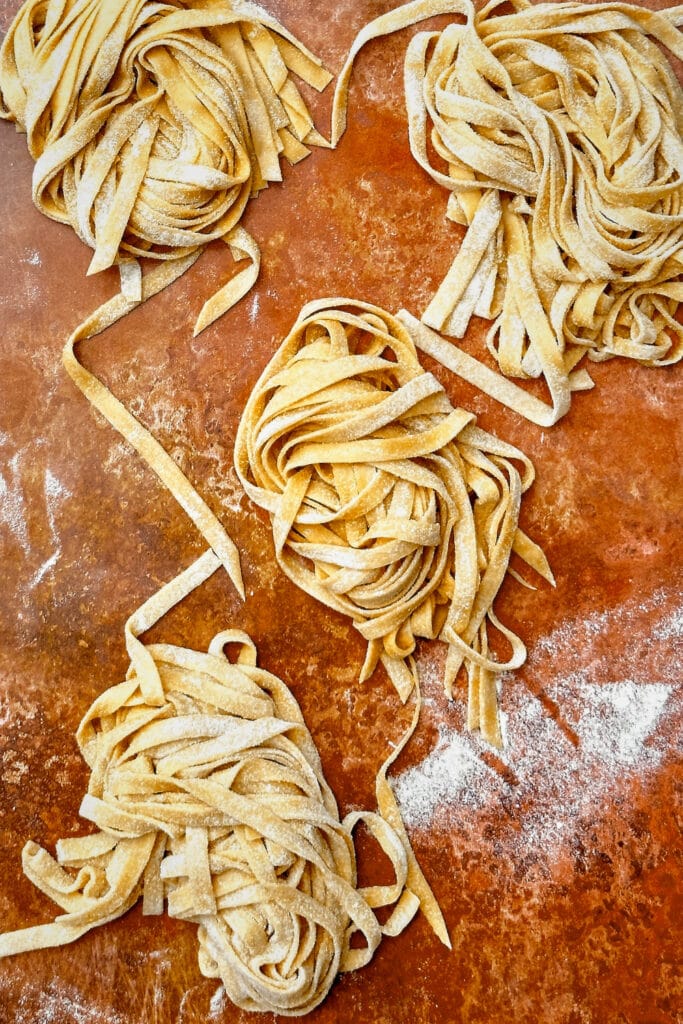Wild Garlic Pesto Pasta Recipe
This wild garlic pesto pasta combines homemade, silky pasta ribbons with the bold aromatic flavor of wild garlic. It’s a simple yet exquisite weeknight dinner. Made with foraged wild garlic and only a handful of other ingredients, this recipe is a flavorful springtime twist on classic basil pesto.
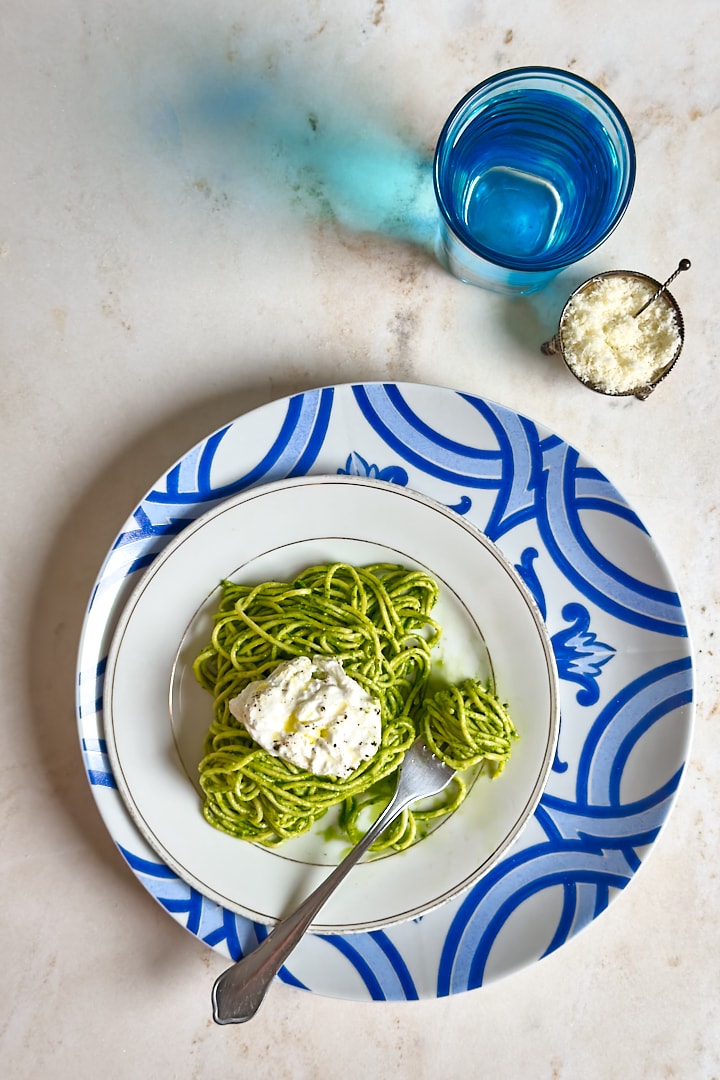
Ingredients and Tools You’ll Need
Step-by-Step Instructions
Step 1
Make one batch of Italian pasta dough:
Create a flour well on your work surface and crack the eggs into the well. Using a fork, break up the yolks and begin to mix the eggs with the flour in the center. Slowly incorporate more and more flour from the edges until a thick paste forms. Use a bench scraper to fold in the remaining flour and start kneading the dough with your hands. Knead for at least 10 minutes until the dough becomes smooth and elastic. Wrap it tightly in cling film and let it rest on the counter for at least 30 minutes.
Step 2
While the dough is resting, make the pesto:
With a mortar and pestle:
Rinse the wild garlic leaves and pat them dry with a paper towel. Chop or tear the leaves into smaller pieces. Peel the garlic clove and add it to the mortar with a pinch of salt. Grind the garlic and salt until it turns into a paste. Then, add the wild garlic and grind until it is finely chopped. Next, add the pine nuts and continue grinding in a circular motion until everything comes together into a thick paste. Gradually add the Parmesan cheese, stirring until well combined. Lastly, drizzle in the olive oil and stir until the pesto is smooth and creamy. Adjust the seasoning as needed with salt and freshly ground black pepper.
With a blender:
Add the wild garlic, pine nuts, garlic, and a pinch of salt to the blender. Pulse a few times until roughly chopped. With the blender running, slowly pour in the olive until the mixture turns into a smooth paste. Transfer the paste to a small mixing bowl and gradually stir in the Parmesan cheese. If it’s too thick, add a little more oil. Adjust the seasoning to your liking.
Step 3
Make the fresh pasta:
Cut off half of the pasta dough and keep the rest well wrapped. Pass the dough through your pasta machine and roll it out into a thin sheet. Cut the sheet into wide ribbons to make homemade pappardelle, or use a pasta cutter attachment to cut thinner ribbons. For this recipe, I rolled the dough out to setting 4 and used the tagliolini pasta cutter attachment to cut thin, spaghetti-like ribbons. Dust the pasta with semolina flour to prevent sticking, and arrange it in small nests until ready to cook.
Step 4
Cook the pasta:
Bring a large pot of water to a rolling boil and add a generous amount of salt. Meanwhile, gently warm the pesto in a skillet over low heat. Avoid overheating the pesto and don’t let it simmer or boil. Add the pasta nests to the boiling water and gently stir to prevent the ribbons from sticking together. Cook the pasta for 2-3 minutes, until “al dente”. Keep in mind that fresh pasta cooks a lot faster than dried pasta. Make sure to check frequently if it’s done to your liking. Add a splash of pasta water to the pesto to turn it into a sauce. Once the pasta is done, transfer it directly to the pesto skillet, using tongs or a pasta spider. Toss and stir the pasta until evenly coated with pesto. If necessary, add a bit more pasta water to loosen up the sauce. Serve with Parmesan cheese or fresh burrata and a drizzle of olive oil. Enjoy!
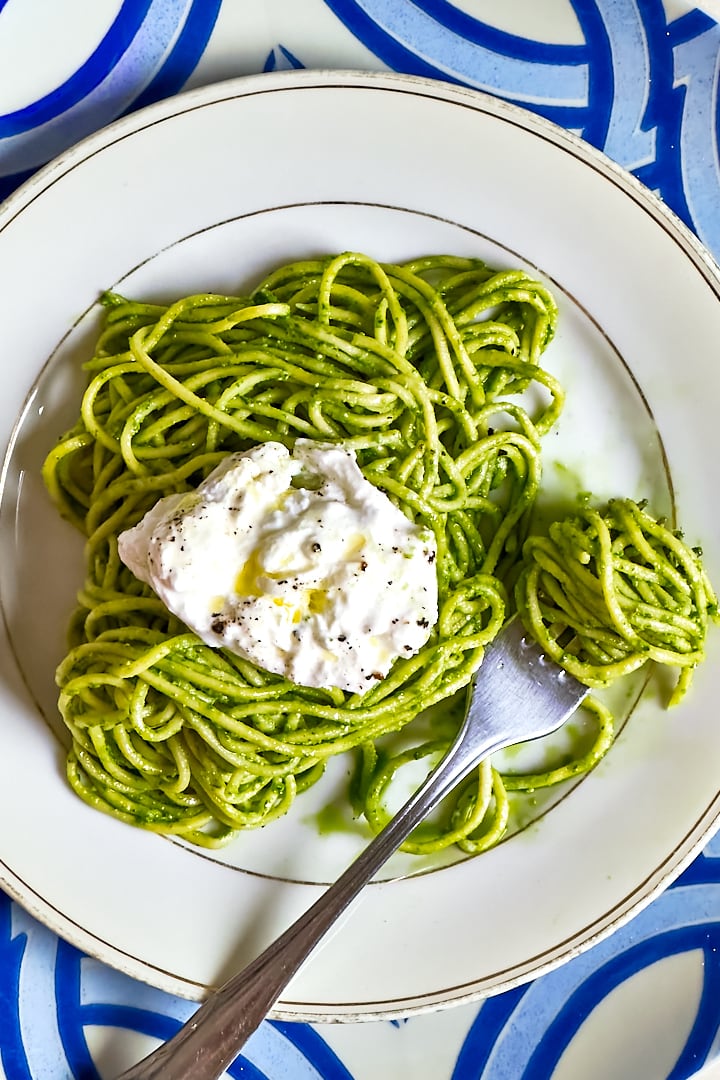
Common Questions About Wild Garlic Pesto
More Pasta Recipes You May Like:
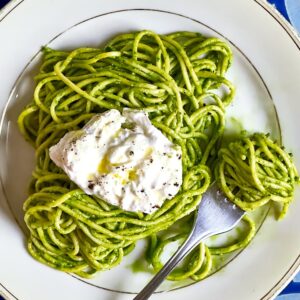
Wild Garlic Pesto Pasta
Equipment
- Mortar and Pestle or blender
- Pasta machine – e.g. Marcato Atlas 150 Wellness
Ingredients
For the pesto:
- 1 small garlic clove – optional
- 50 g Wild garlic leaves
- 30 g Pine nuts
- 50 g Parmesan cheese – finely grated
- 100 g Olive oil – extra virgin
- Salt and pepper to taste
For the pasta:
- 200 g Flour – "Tipo 00" or a combination of all-purpose flour and finely milled semolina flour
- 114 g Eggs – about 2 medium eggs
Instructions
- Make one batch of Italian pasta dough: Create a flour well on your work surface and crack the eggs into the well. Using a fork, break up the yolks and begin to mix the eggs with the flour in the center. Slowly incorporate more and more flour from the edges until a thick paste forms. Use a bench scraper to fold in the remaining flour and start kneading the dough with your hands. Knead for at least 10 minutes until the dough becomes smooth and elastic. Wrap it tightly in cling film and let it rest on the counter for at least 30 minutes.
- While the dough is resting, make the pesto: With a mortar and pestle: Rinse the wild garlic leaves and pat them dry with a paper towel. Chop or tear the leaves into smaller pieces. Peel the garlic clove and add it to the mortar with a pinch of salt. Grind the garlic until it turns into a paste. Then, add the wild garlic and grind until it is finely chopped. Next, add the pine nuts and continue grinding in a circular motion until everything comes together into a thick paste. Gradually add the parmesan cheese, stirring until well combined. Lastly, drizzle in the olive oil and stir until the pesto is smooth and creamy. If the texture is slightly too thick, add a little more oil. Adjust the seasoning as needed with salt and freshly ground black pepper.With a blender: Add the wild garlic, pine nuts, garlic clove and a pinch of salt to the blender. Pulse a few times until roughly chopped. With the blender running, slowly pour in the olive until the mixture turns into a smooth paste. Transfer the paste to a small mixing bowl and gradually stir in the parmesan cheese. If it’s too thick, add a little more oil. Adjust the seasoning to your liking.
- Make the fresh pasta: Cut off half of the pasta dough and keep the rest well wrapped. Pass the dough through your pasta machine and roll it out into a thin sheet. Cut the sheet into wide ribbons to make homemade pappardelle, or use the pasta cutter attachment of your pasta machine to cut thinner ribbons. For this recipe, I rolled the dough out to setting 4 and used the tagliolini pasta cutter attachment to cut thin, spaghetti-like ribbons. Dust the pasta with semolina flour to prevent sticking, and shape it into small nests until ready to cook.
- Cook the pasta: Bring a large pot of water to a rolling boil and add a generous amount of salt. Meanwhile, gently warm the pesto in a skillet over low heat. Avoid overheating the pesto and don’t let it simmer or boil. Add the pasta nests to the boiling water and gently stir to prevent the ribbons from sticking together. Cook the pasta for 1-3 minutes, until „al dente“. Keep in mind that fresh pasta cooks a lot faster than dried pasta. Make sure to check frequently if it’s done to your liking. Add a splash of pasta water to the pesto to turn it into a sauce. Once the pasta is done, transfer it directly to the skillet, using tongs or a pasta spider. Toss and stir the pasta until evenly coated with pesto. If necessary, add a bit more pasta water to loosen up the sauce. Serve with parmesan cheese or fresh burrata and a drizzle of olive oil. Enjoy!


